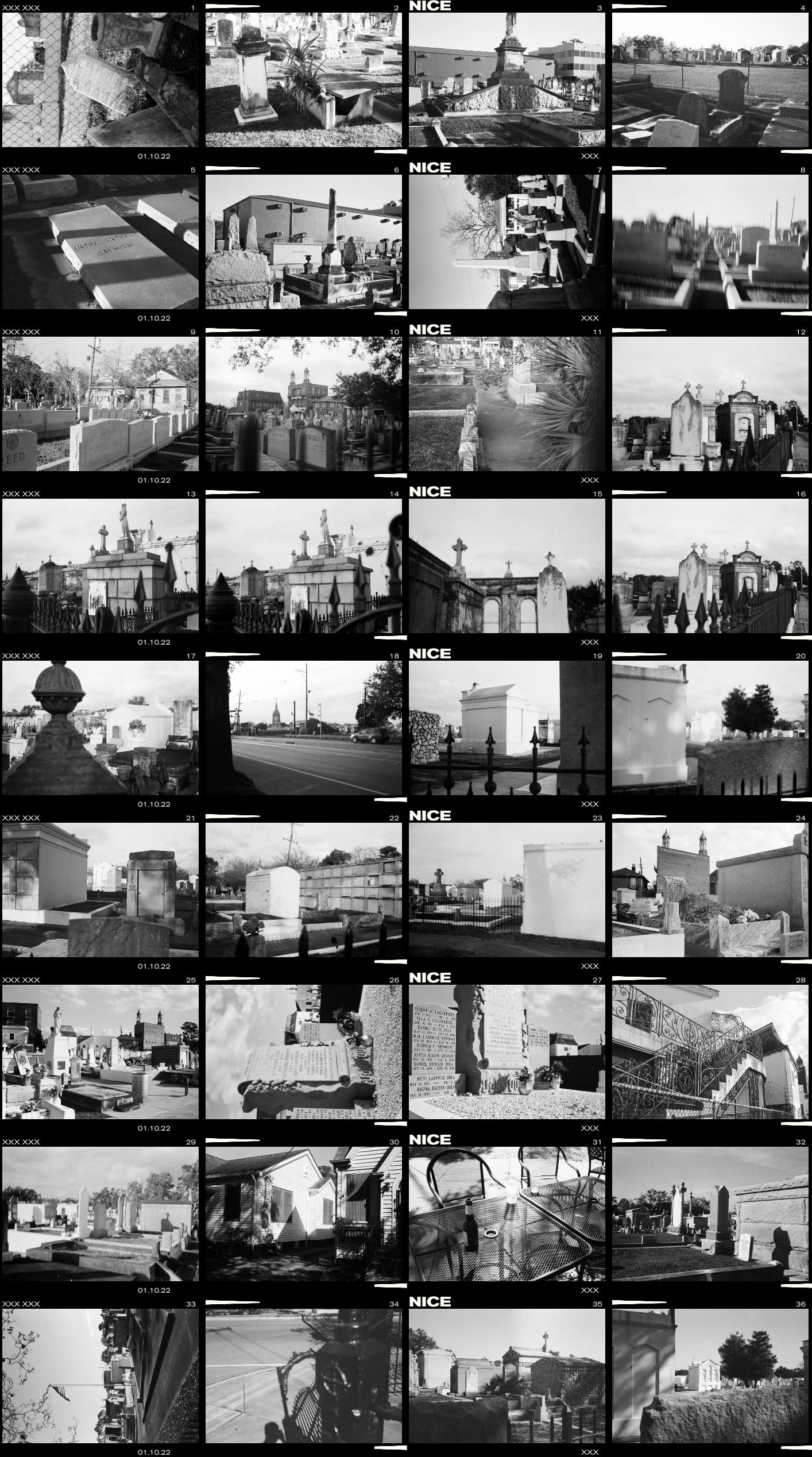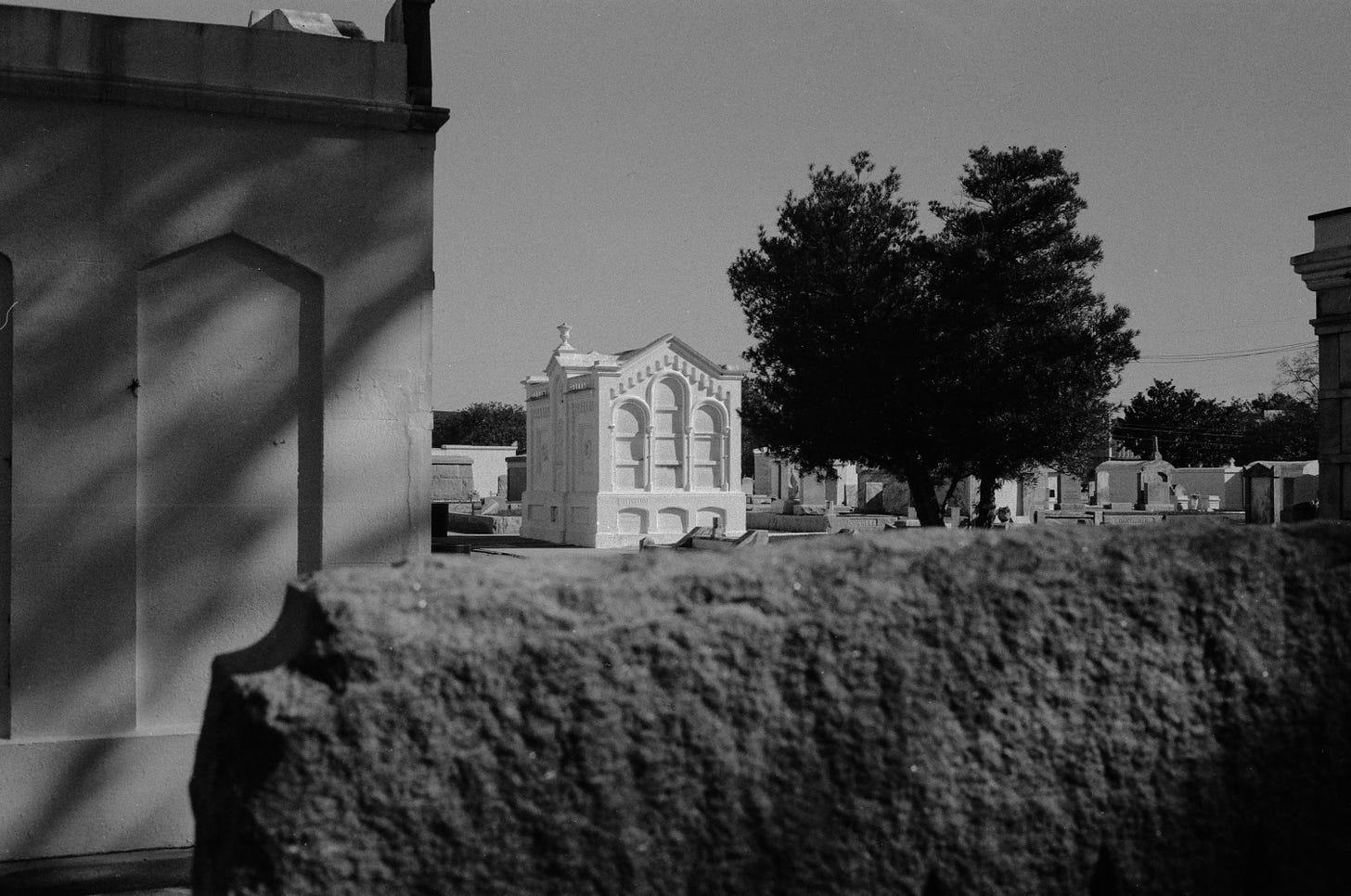I NEED MORE EXPIRED FILM
Before getting into the meat of this issue, I wanted to extend another call for expired film — I intend on continuing this project (cemeteries on expired film) throughout the year and sharing more results as they come. The deal is this: send me a roll of expired film and I’ll send you a print of an image from your roll in return. It’ll be our little collaboration. Just reply to this email if you need my address!
Today on Miscellanea, I’m sharing some images from a roll of my still untitled ‘cemeteries on expired film’ project along with some initial ramblings on the underpinning philosophy of the project.
The roll I’m sharing today came to me from Justin Fennert. Justin and I met in Chicago in the summer of 2014, at the height of the first wave of the Instagram-influencer world. We’ve followed each other since, and so seeing this project, he sent over a roll of Efke 100, a black-and-white Croatian film that was discontinued in 2012 — and wow, what a film!
This roll produced what are probably the most consistent exposures of the project so far:
Normally, a low-speed film like Efke 100 would give you a finer grain, but with age and this film’s chemistry (I’m assuming) — thick and buttery grain takes the stage, with a surprising amount of exposure latitude to boot. It performed particularly well for this project — the wide range is helpful in scenes with so many hard shadows.
Diving deeper
This project has plainly dealt with the juxtaposition of expired film and ‘expired’ people. How do these relate? My walking so far has circled the Catholic cemetery in which some of my ancestors are buried (one of whom was a minstrel who performed in blackface).
The way we deal with the past, and our ancestral dialogues, comes to the forefront — do we discard our pasts entirely? No. Because recognition that we are products of our environment (time and place) is essential to our understanding of ourselves and an important part of developing the humility necessary to grow and change.
We must come face-to-face with this problem with the understanding that there are current evils we willingly participate in — evils that future generations and even our kin will look back on with disappointment. Perhaps if we can develop compassion for those from which we came, we can grow a more wholesome self-compassion that extends into the future.
Aesthetic metaphor
The tones of expired film will always be a bit off — each roll eccentric despite its foundation in the same fundamental chemistry. The age of the film and the level of care in its handling, combined with its final treatment through exposure and development, create its final and unique display.
To extend the metaphor: how I treat the past (film), and how much light I expose it to, paints a picture of compassion for my ancestral timeline.
The expired film mostly requires of the photographer this: to be overexposed. Perhaps this can be metaphorically relayed into a sort of blind premonition of our lineage — and maybe my own hopeful knowing that a greater shedding of light (an overexposure) can make allowance for their place in my story and pave a path for progress. The charm of the medium.
To shed light (to share the truth) is sometimes the greatest compassion we can show ourselves and others — past, present, and future.
In closing
Writing today’s issue, to send it to almost 300 people, has been oddly challenging. Even understanding that we all have a host of ghosts down the line, which we have practically nothing to do with, it is difficult to find compassion for it all when you truly begin to grapple with it.
Engaging with these ideas as an art practice is a gift to me, sure, but it also feels to be a heavy burden. I welcome that burden, and I think that we would all do well to take it upon ourselves to dig up the past and discover how we relate to it.
It isn’t about punishing them, punishing ourselves, or punishing anyone. It is ultimately for progress and for happiness. But the only way we relieve these burdens and repeat less of the pasts’ mistakes is by for a time carrying them ourselves — feeling with our fingertips the rougher grooves and lips of the carved stones above them.
The photos
True miscellanea 💀
The Art of Hand-Carving Headstones Isn’t Dead Yet
Meet the new generation of artisans keeping the tradition alive in U.S. cemeteries.
A Death Full of Life
If they’re not simply abandoned, they are accused of wastefulness and pollution: cemeteries have a hard life in our current times. And yet, they can play an essential role — on both the environmental and human levels — for those who are still living.
“Make yourself do unpleasant things, so as to gain the upper hand of your soul."
W. E. B. DU BOIS













